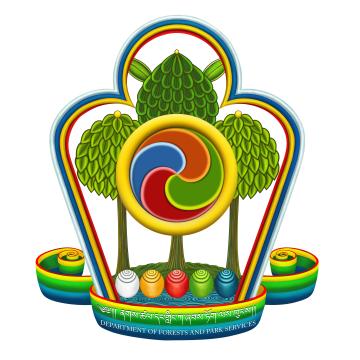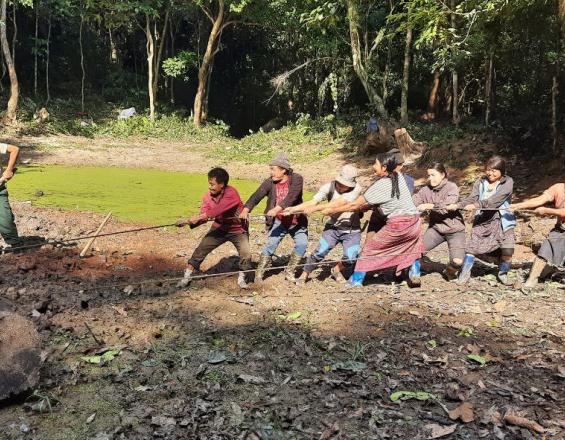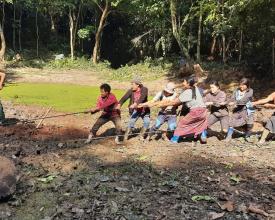
Hands for Habitat: Communities and Rangers Restoring the Wild

Communities and park officials in Jomotsangkha Wildlife Sanctuary are working hand-in-hand to restore and sustain important wildlife habitats. The sanctuary faced challenges such as declining grasslands, scarce water sources, and growing pressure on natural resources. In response, a participatory habitat management approach was introduced, engaging local people in grassland improvement, construction of waterholes, and development of mineral licks for wildlife. This collaboration has strengthened community ownership, encouraged youth participation, and deepened understanding of conservation. As a result, habitats are healthier, wildlife now has better access to food and water, and people have become active partners in protecting the landscapes around them. The Solution demonstrates how shared responsibility between communities and park authorities can create resilient ecosystems and long-lasting conservation impacts, inspiring continued stewardship.
Impacts
The Solution has generated significant environmental, social, and economic impacts for both the sanctuary and nearby communities. Environmentally, over 500 acres of grasslands have been restored and maintained through clearing, enrichment planting, and regular management, greatly improving forage availability for wild herbivores. More than 20 waterholes and 10 mineral licks are now actively managed, ensuring reliable access to water and essential nutrients throughout the year. These improvements have enhanced overall habitat quality and indirectly reduced human–wildlife conflicts by keeping wildlife better supported within forest areas.
Socially, the initiative has strengthened local engagement in conservation. Community members actively participate in habitat work, gaining hands-on knowledge in grassland improvement, waterhole maintenance, and wildlife needs. This involvement has created a strong sense of ownership and pride, particularly among youth and village volunteers, while improving collaboration and trust between park officials and residents.
Economically, reduced crop damage due to fewer wildlife incursions has helped lower household losses. The improved landscape also supports opportunities for nature-based tourism and future community-led conservation activities. Overall, the Solution has resulted in healthier ecosystems, empowered communities, and more harmonious coexistence between people and wi




